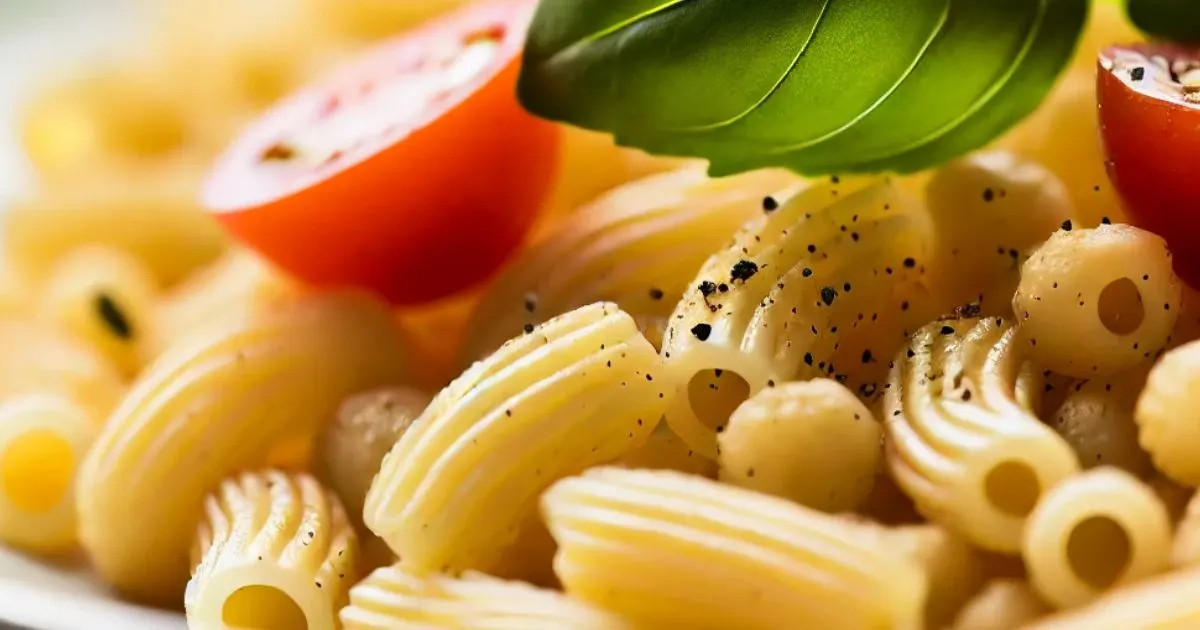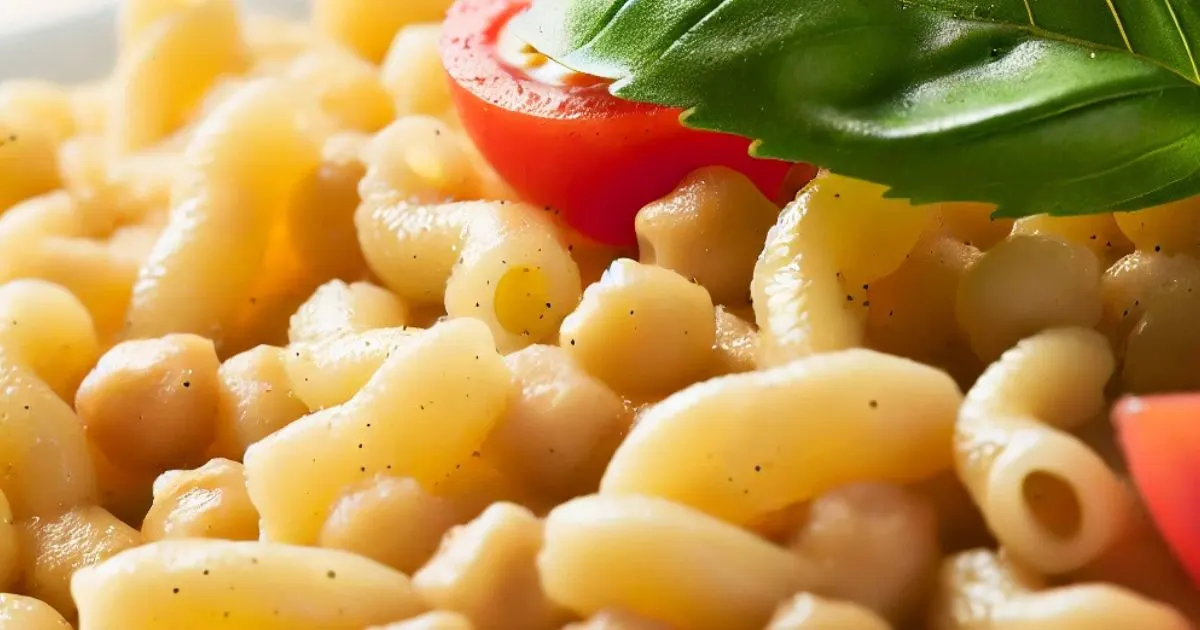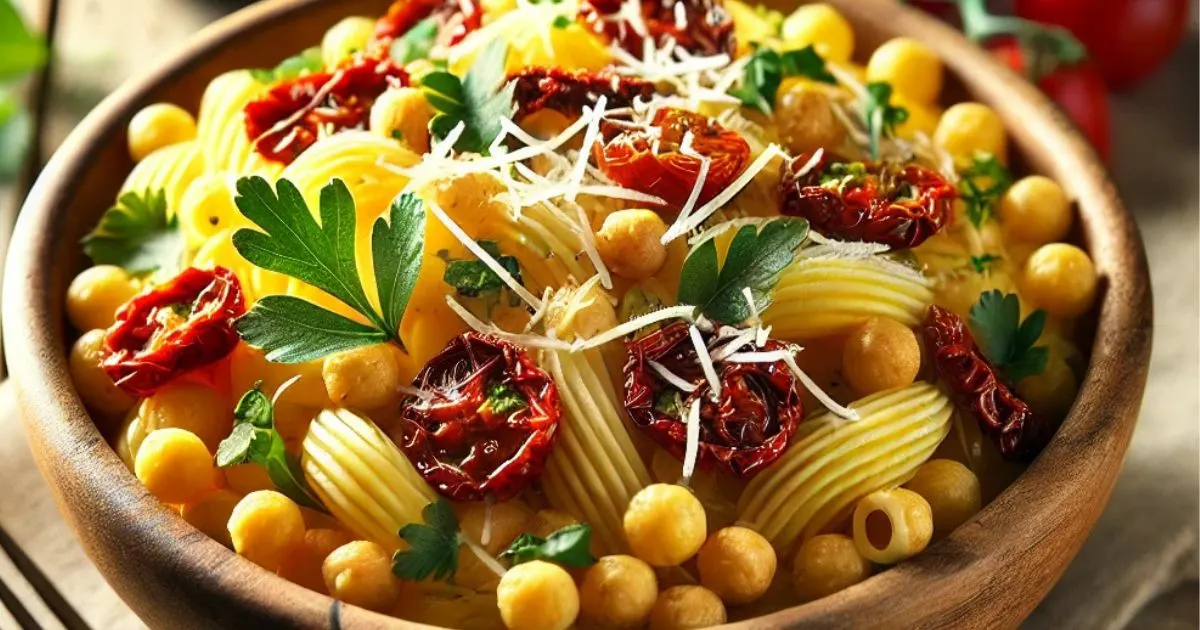Table of Contents
There’s a certain beauty in the simplicity of pasta. For many, it’s the ultimate comfort food quick to make, endlessly versatile, and always satisfying. But, what if you could take that beloved pasta and give it a healthy makeover? That’s where chickpea pasta comes in. The idea of using chickpeas to create a pasta substitute originated as part of the gluten-free and plant-based food movements, but it quickly became a favorite for its unique ability to offer both taste and nutrition.
Chickpea pasta provides a great source of protein and fiber, making it perfect for anyone looking to add a nutritious twist to their favorite meals. This particular recipe is one that I love, blending simple, whole ingredients with a few fresh twists that elevate the dish without complicating it.
Ingredients
When making chickpea pasta, quality ingredients can make all the difference. Here’s what you’ll need:
1- 8 oz chickpea pasta (Choose a brand that has minimal ingredients, ideally just chickpeas and maybe some water. The purer the ingredients, the better the texture and flavor. Chickpea pasta tends to have a slightly nutty flavor, so you want it to be as clean as possible.)
2- 2 tbsp extra virgin olive oil (Go for cold-pressed, extra virgin for the best taste and nutritional value. Olive oil brings a rich, fruity flavor that pairs beautifully with the chickpeas’ subtle nuttiness.)
3- 2 garlic cloves, minced (Fresh garlic offers a sharper, more vibrant flavor than pre-minced or powdered garlic. If you can, go for organic garlic to really enhance the dish’s aroma.)
4- 1 small red onion, finely chopped (Red onions add a slight sweetness that contrasts with the earthy chickpea pasta. You could also substitute with yellow onions for a milder flavor.)
5- 1 cup cherry tomatoes, halved (Opt for organic, ripe cherry tomatoes. Their natural sweetness brightens the dish, balancing the richness of the olive oil.)
6- 2 cups baby spinach (Spinach wilts beautifully into the pasta and adds an extra layer of nutrition. If spinach isn’t in season, you can substitute with kale or arugula for a peppery kick.)
7- ¼ cup basil, chopped (Fresh basil adds a burst of herbal freshness. Use large leaves, which tend to have a stronger flavor, and chop them just before adding to keep the taste vibrant.)
8- 1 tsp red pepper flakes (This is optional, but a little heat can bring a lot of depth. Adjust the quantity based on your spice tolerance.)
Salt and pepper to taste (Seasoning is key. Use sea salt or Himalayan pink salt for a more nuanced flavor, and freshly cracked black pepper for a bit of sharpness.)

Instructions
Now that we have our ingredients ready, let’s dive into the process of preparing this easy, yet flavorful, chickpea pasta. It’s a simple dish, but paying attention to timing and techniques will elevate it from good to great.
Cook the chickpea pasta:
Bring a large pot of salted water to a boil. Add the chickpea pasta and cook according to the package instructions, usually around 7-9 minutes. Be careful not to overcook it; chickpea pasta can become mushy quickly, so start checking a minute before the time is up. Drain, but reserve about ½ cup of the cooking water — this starchy liquid will help create a smooth sauce later.
Prepare the aromatics:
While the pasta is cooking, heat the olive oil in a large skillet over medium heat. Add the minced garlic and chopped red onion. Sauté for 3-4 minutes, or until the garlic is fragrant and the onions have softened. Stir often, as garlic can burn easily, and once it’s scorched, the flavor will overpower the dish.
Cook the tomatoes:
Add the halved cherry tomatoes to the skillet and cook for another 3 minutes, stirring occasionally. You want the tomatoes to soften and release their juices, creating the beginnings of a light, flavorful sauce. Some of them should blister slightly, giving the dish a richer depth of flavor.
Wilt the spinach:
Add the spinach to the skillet and cook for 1-2 minutes, just until wilted. Spinach reduces quickly, so toss it gently in the oil and tomatoes, allowing it to soften but still retain its bright green color.
Combine the pasta:
Lower the heat to a simmer. Toss the cooked chickpea pasta into the skillet, stirring to combine all the ingredients. If the mixture looks too dry, add a splash of the reserved pasta water to help loosen the sauce and make it cling to the pasta. This starchy water is like a secret weapon — it transforms a simple mix into a silky, cohesive dish.
Finish with basil and seasoning:
Stir in the chopped basil, red pepper flakes (if using), and season generously with salt and pepper. The basil should be added just before serving to preserve its fresh flavor and vibrant color.
Serve immediately:
Divide the chickpea pasta into bowls, drizzle with a little more olive oil if desired, and garnish with an extra sprinkle of fresh basil or red pepper flakes for color and heat.

Expert Tips
Avoiding mushy pasta: Chickpea pasta can quickly go from perfectly al dente to overcooked. Make sure to undercook it slightly, as it will continue to soften once you mix it with the warm sauce.
Flavor balance: The key to balancing this dish lies in the contrast between the earthy chickpea pasta and the sweetness of the cherry tomatoes. Don’t skimp on the tomatoes or the olive oil, as they provide the moisture and sweetness that brings the dish together.
Boosting protein: While chickpea pasta is already a great source of plant-based protein, you can easily add more by topping the dish with grilled chicken, sautéed tofu, or even some roasted chickpeas for extra crunch.
Substitutions: If you don’t have fresh spinach, try using arugula for a peppery bite, or kale for a heartier green. You can also switch up the herbs — try parsley or even a bit of mint for a fresh twist.
Conclusion
This chickpea pasta recipe is proof that healthy eating doesn’t have to be boring or complicated. It’s a dish that feels indulgent but is packed with nutrition, from the protein-rich pasta to the vibrant mix of vegetables and fresh herbs.
Don’t be afraid to make it your own — swap out ingredients based on what’s in season, or even add your favorite protein to create a heartier meal. Cooking is all about experimenting, so feel free to get creative with this base recipe. Try adding roasted vegetables, a squeeze of lemon juice, or even some freshly grated Parmesan on top. Whatever you choose, this dish will leave you feeling nourished and satisfie.

